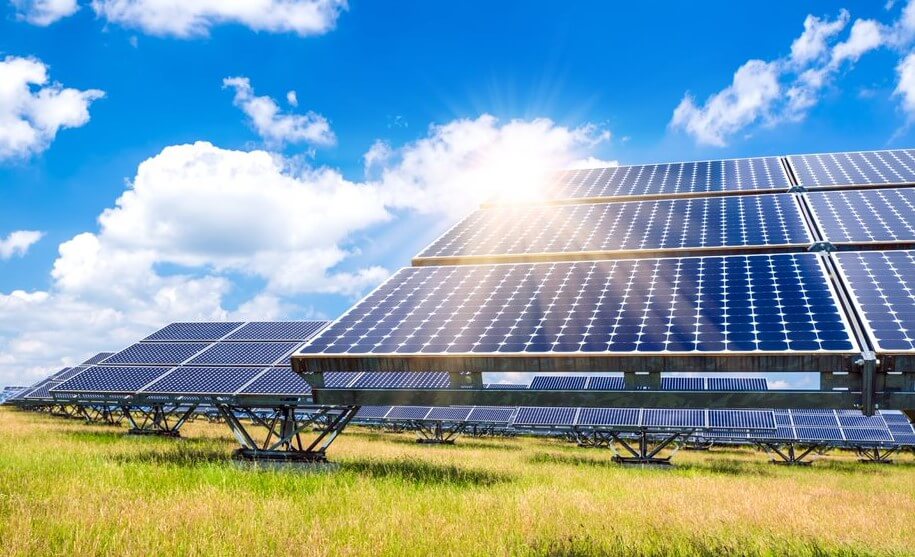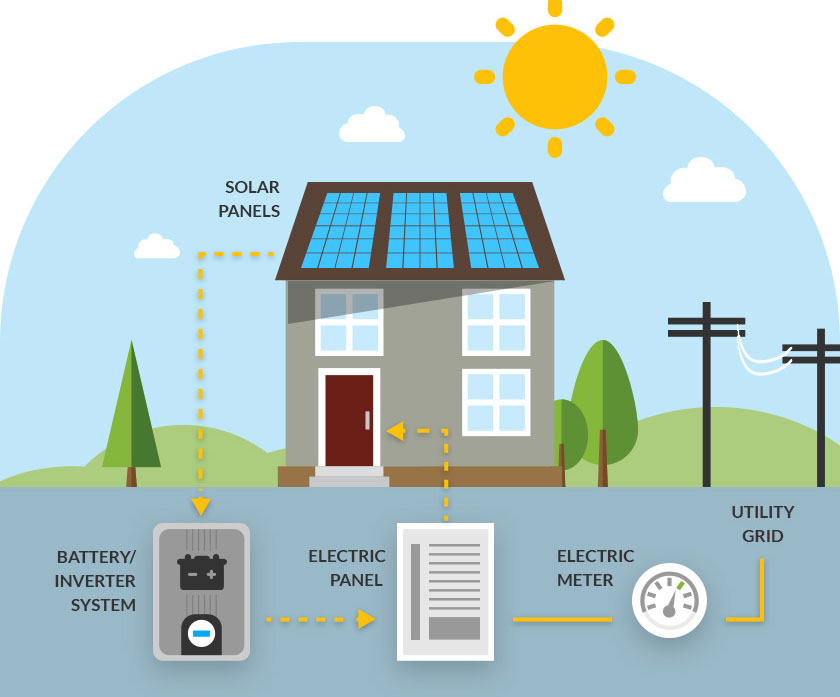Solar Incentives in Virginia: Lumina Solar Specializes In Providing Advanced Photovoltaic Solutions For Residences And Services
History and Founding
Have you ever questioned how a solar panel company springs from a mere spark of inspiration into a powerhouse of eco-friendly energy? It typically starts with a more info vision-- one sustained by a mix of development, decision, and a pinch of serendipity. The journey of numerous solar companies mirrors the evolution of the technology itself: from bulky, ineffective panels to streamlined, high-efficiency marvels harnessing the sun's bounty.
The Early Days
In the late 20th century, when solar energy was still a niche principle, pioneers planted seeds for what would become a worldwide movement. Think of a little workshop filled with curious engineers, tirelessly try out photovoltaic cells. Their passion was palpable, typically driven by a desire to fight environment modification and decrease reliance on nonrenewable fuel sources.
One such anecdote is about a founder who, influenced by a camping trip, recognized that even in remote areas, the sun might power important gadgets. This basic observation triggered a business's objective to democratize access to tidy energy.
Founding Principles

- Development: Constantly pressing the limits of solar innovation to enhance efficiency and sturdiness.
- Sustainability: Dedicating to environmentally friendly manufacturing and minimizing carbon footprints.
- Availability: Making renewable resource services affordable and useful for everyday users.
Turning points in Development
| Year | Secret Event |
|---|---|
| 1985 | Business established in a small garage, focusing on research and advancement. |
| 1995 | Industrial solar panel product released, acquiring regional attention. |
| 2005 | Expanded to international markets, accepting global renewable resource goals. |
| 2015 | Introduced cutting-edge solar panel technology with improved energy conversion. |
Isn't it interesting how these incremental actions, frequently neglected, shape the energy landscape today? The solar panel company story is not practically innovation; it has to do with a ruthless quest for a brighter, cleaner future.

Innovations in Photovoltaic Panel Technologies
Ever noticed how some photovoltaic panels shine brighter and last longer? It's not magic; it's the science of photovoltaic performance. Modern photovoltaic panel business invest heavily in technologies like bifacial cells, which record sunlight from both sides, improving energy harvest without expanding roofing system space. Have you ever wondered why some panels carry out better on cloudy days? That's due to advances in thin-film solar technology, which grows under diffused light conditions.
Item Variations Customized to Distinct Needs
One size never fits all. Solar panel suppliers now provide:
- Monocrystalline panels for optimum effectiveness and streamlined visual appeals, perfect for space-constrained rooftops.
- Polycrystalline panels, which offer a cost-efficient alternative without compromising too much output.
- Building-integrated photovoltaics (BIPV), combining solar tech effortlessly into architectural aspects like windows and exteriors.
Choosing the best product isn't almost in advance cost; it has to do with matching your environment, energy goals, and long-term savings. Homes shaded by trees need panels that excel in low-light situations, something numerous overlook up until energy expenses climb up unexpectedly.
Technical Tips for Optimum Choice
- Evaluate the temperature level coefficient-- lower worths suggest panels lose less efficiency on hot days.
- Search for panels with improved anti-reflective finishings to make the most of light absorption.
- Consider the panel's service warranty not just for problems, however for ensured power output over years.
- Do not underestimate the value of the inverter innovation coupled with the panels; it can make or break your system's performance.
Beyond Panels: Emerging Patterns
Imagine photovoltaic panels that change their angle automatically to go after the sun-- tracking systems are ending up being more accessible, increasing yield substantially. Or solar tiles that blend undetectably into your roofline, transforming your home into a silent, self-dependent power generator. These innovations are improving what a photovoltaic panel business uses-- not simply products, but integrated energy options.
Market Presence and Global Operations
Ever wonder why some photovoltaic panel companies seem to grow up in every corner of the globe while others hardly make a ripple? The difference lies not simply in innovation however in mastering the art of browsing varied markets. Broadening globally resembles planting seeds in various environments-- you need to comprehend each environment's unique conditions to flourish.
Take, for example, the detailed dance of logistics and supply chain management. Delivering panels midway throughout the world isn't simply about range; it's about timing, customs, tariffs, and adjusting to regional demand variations. A business with robust worldwide operations anticipates these variables, ensuring panels arrive on schedule without inflating costs. This insight is no small task and typically separates market leaders from fans.
Key Strategies for Expanding Market Existence
- Localized manufacturing: Establishing production hubs near target audience lowers shipping delays and import intricacies.
- Strategic partnerships: Teaming up with local companies speeds up market penetration and constructs trust.
- Adaptive product style: Customizing photovoltaic panel tech to weather, sun strength, and facilities subtleties enhances performance and approval.
What about the human aspect? Solar panel companies operating internationally need to reconcile cultural distinctions and regulatory subtleties without losing sight of their core objective. What works in a sun-drenched desert may falter in a humid seaside area. Sometimes, the most ingenious service is simply listening-- taking in local insights to fine-tune technology and technique.
Specialists frequently encourage a phased rollout rather than a shotgun expansion. Why run the risk of overextension when measured development constructs sustainable momentum? Scaling sensibly indicates balancing aspiration with functional durability - Commercial Solar Panels Virginia. In the race for sustainable energy dominance, patience can be as valuable as speed.
Ecological Impact and Sustainability Practices
When photovoltaic panels initially emerged, lots of assumed they brought zero ecological luggage. Nevertheless, the reality is more nuanced. The production of solar batteries involves rare earth metals and energy-intensive procedures, which can leave a substantial carbon footprint before the panels even reach roofs. The real environmental cost depends heavily on the sustainability practices employed by the solar panel company throughout the lifecycle of their products.
How frequently do we pause to consider what occurs to solar panels at the end of their useful life? Unlike batteries or electronics, photovoltaic panels can last 25-30 years, but disposal and recycling paths stay underdeveloped in many regions. A company devoted to lowering ecological harm will have a robust prepare for recycling photovoltaic materials, restoring important silicon, glass, and metals to prevent land fill accumulation.
Key Sustainability Methods
- Making use of low-impact manufacturing techniques that decrease water and energy usage.
- Carrying out closed-loop systems to recycle production waste back into new panels.
- Engaging in transparent supply chain audits to guarantee ethical sourcing of raw products.
- Creating panels for simpler disassembly to help future recycling efforts.
It deserves keeping in mind that some solar companies have actually originated ingenious approaches, such as incorporating naturally degradable parts or utilizing less harmful chemicals throughout fabrication. This not only lowers ecological pressure however also sets a precedent for the market. The question remains: can the solar industry truly pivot towards a circular economy model without compromising effectiveness or affordability?
Specialist Tips for Evaluating Sustainability
- Ask about the business's commitment to carbon-neutral manufacturing and whether they balance out emissions.
- Examine if they partner with accredited recycling centers committed to photovoltaic panel waste.
- Search for openness reports detailing ecological effects and sustainability objectives.
- Consider the durability and guarantee of panels as an indirect step of resource efficiency.
In the end, selecting solar power should mean more than just slashing electrical energy costs; it's about supporting a future where energy is collected responsibly and waste is thoughtfully managed. Solar panel companies that accept this viewpoint not only light up homes but also cast a brighter light on sustainable development.